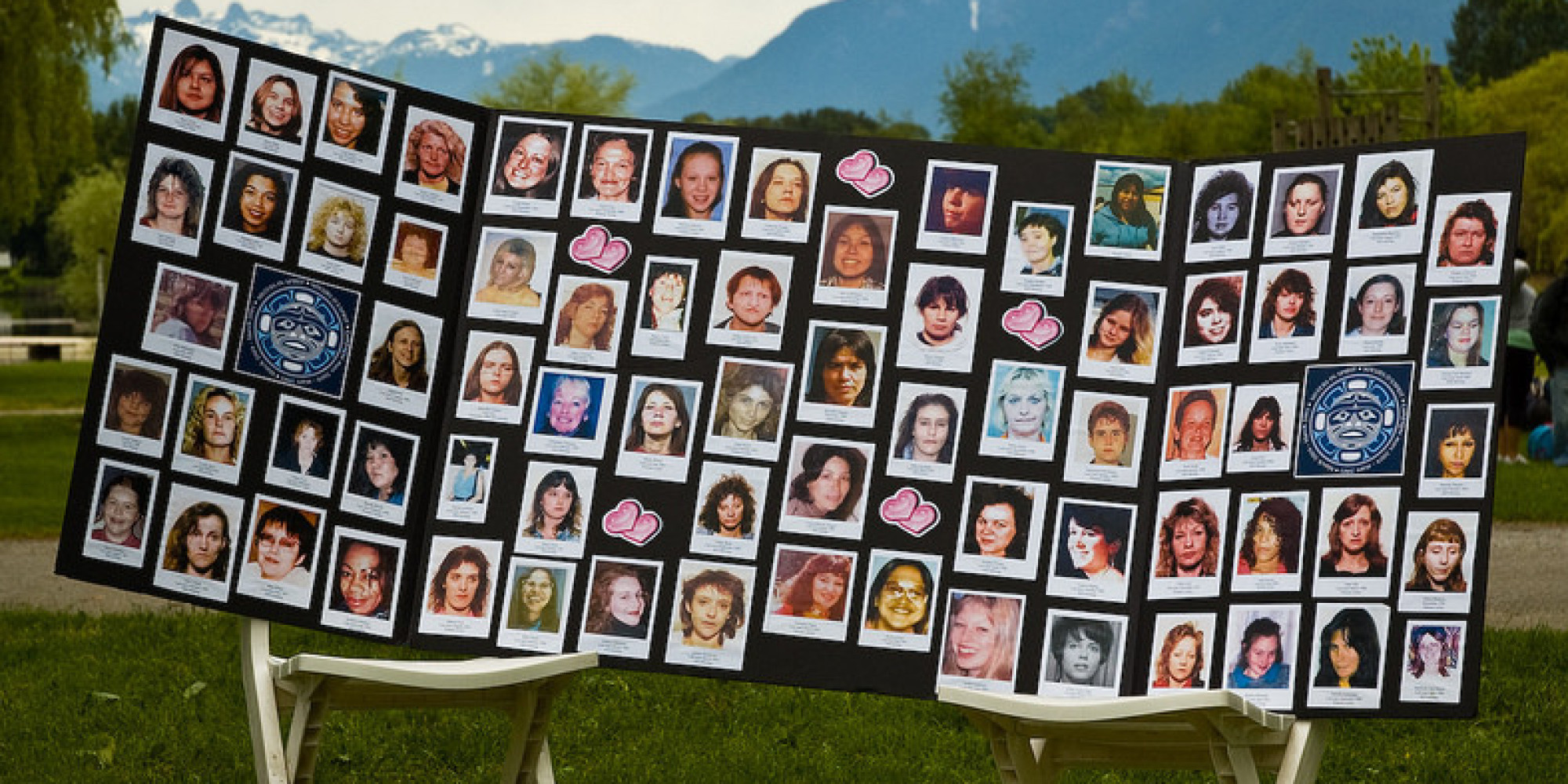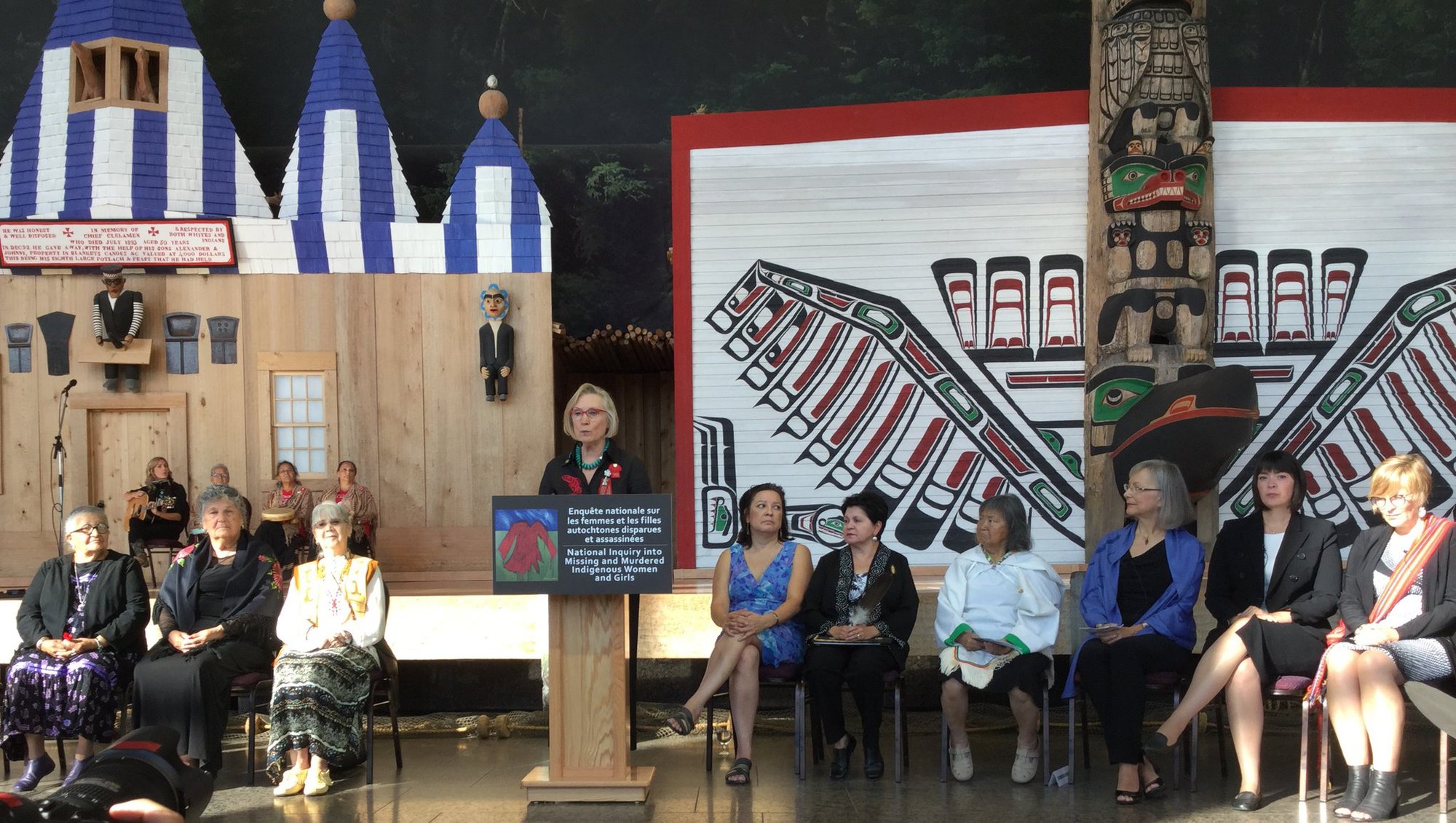Your Online Friendship Centre
Exit Site
Your Online Friendship Centre
A roadmap of British Columbia would call it the “Yellowhead Highway 16” or the “Trans-Canada Yellowhead Highway,” but to many the lonely stretch of road connecting Prince Rupert and Prince George is better known as the Highway of Tears.
The Highway of Tears is a 720 km long section of Highway 16, the entirety of which spans across British Columbia, Alberta, Saskatchewan and Manitoba. There are a number of municipalities and 23 First Nations communities that border the Highway of Tears, and it is an area that is plagued by poverty and a lack of public infrastructure, including transit. According to the Highway of Tears Symposium Recommendation Report, many of the highway’s victims are believed to have been hitchhiking immediately before they disappeared or died.
Twenty-five year old Nicole Hoar was one such victim. According to Crime Stoppers, she was working as a tree planter in Prince George at the time when she decided to surprise her sister with a visit in Smithers. She was last seen hitchhiking at a nearby gas station. Her disappearance in June 2002 brought an unparalleled level of national attention to the Highway of Tears, but it also made a wider audience aware that her disappearance was not an isolated incident. Nicole’s disappearance was merely part of a long and sinister legacy. Many, mostly young Aboriginal women, have either gone missing or been found murdered on the Highway of Tears since 1969, long before Nicole or the women and girls after her.
The exact number of missing and murdered women found along the highway remains undetermined. A website maintained by the Carrier Sekani Family Services suggests the number exceeds 30. A Human Rights Watch report suggest there are may be more than 40. However, officially only 18 cases have been identified and are part of the RCMP’s investigation of the Highway of Tears, called Project E-PANA.
Launched in 2005, Project E-PANA was tasked with investigating the unsolved murders with links to the Highway of Tears, to determine if a serial killer, or killers, is responsible for murdering young women travelling along major highways in BC. Named after an Inuit mythological god who cared for the souls of the underworld before they were reincarnated, Project E-PANA looked at all relevant cases on Highway 16 and the adjacent Highways 97 and 5. According to its website, the taskforce was charged with investigating 13 homicides and five missing persons cases, dates ranging from 1969-2006.
The youngest of these victims was 12-year old Monica Jack. She was last seen riding her bike along the highway near the Nicola Ranch in Merritt, BC in May 1978. Her body was not found until June 1995, 17 years after she had been murdered. Garry Taylor Handlen, the man accused of her and 11-year old Kathryn-Mary Herbert’s murders*, was finally charged and arrested in December 2014. Had she lived, Monica Jack would have been 48 years old.
Project E-PANA has had some success, though the program’s critics argued it took too long to produce very few results. Indeed, apart from the Handlen charge and a DNA link between the 1974 murder of Colleen MacMillen to a deceased American serial killer named Bobby Jack Fowler, E-PANA has had very little to show for all its work. At its height, E-PANA had 70 investigators looking at the cases. Successive budget cuts, including a 2014 cut of $1.4 million to the BC RCMP major crimes unit, have meant this unit has dwindled down to about 12. It is unclear to what extent the project remains operational today.
The most recent case on the E-PANA investigation is the 2006 murder of Aielah Saric Auger of Prince George, BC. Unlike most cases on the Highway of Tears, Auger’s body was found about just a week after she was reported missing, reported by a passing motorist travelling east to Prince George on Highway 16. Her mother, Audrey Auger, would spend the rest of her life relentlessly pursuing justice and seeking answers on Aielah’s death. She started doing awareness walks, and worked to change the moniker of Highway 16’s violent and tragic past, referring to it instead as the Highway of Hope. Audrey died on the same highway just seven years later in a two car collision. The family still does not know what happened to Aielah.
 Image from Huffington Post
Image from Huffington PostIf the exact number of the Highway of Tears’ victims is difficult to pin down, it’s near impossible when one looks nationwide. A 2014 RCMP report on Missing and Murdered Aboriginal women determined overall 1,017 Aboriginal women had been murdered between 1980 and 2012, and another 164 were considered missing. But when you consider cases like Roxanne Fleming, a single mother who went missing in August 1982 in Lillooet, BC but wasn’t reported missing until 2003, it’s easy to see why many believe the number is actually much higher.
The issue of missing and murdered Indigenous women and girls is certainly not new, nor is it isolated to remote areas. In fact, most cases occur in urban areas, according to the Native Women’s Association of Canada (NWAC), in its 2010 report entitled What Their Stories Tell Us: Research Findings from the Sisters In Spirit Initiative. The report also found that while the majority of disappearances and deaths of Aboriginal women and girls occurred in the western provinces, “the distribution of cases across the country suggests no region is immune to violence leading to the disappearance or death of Aboriginal women and girls.”
Both the NWAC report and the 2014 RCMP report agree that Aboriginal women are overrepresented among Canada’s murdered and missing women, and as victims of violence. According to the 2004 General Social Survey, Aboriginal women 15 and older are 3.5 times more likely to experience violence than non-Aboriginal women.
Part of the difficulty in understanding the whole scope of the issue is the lack of reliable data to inform decisions and conclusions on the matter. Though some efforts have been made, within the RCMP, organizations, and even some media outlets, many remain skeptical of the integrity and accuracy of the information. Over a decade after Amnesty International’s scathing 2004 report entitled Stolen Sisters: A human rights response to discrimination and violence against Indigenous women in Canada, we remain unable to conclusively say exactly how many First Nations, Inuit, and Metis women have been murdered or gone missing on our own soil.

This lack of reliable data also makes it very difficult to paint an accurate picture of what the problem actually is. While some broad generalizations can be made of the victims and their profile, they remain vague at best. It makes creating preventive measures extremely difficult to conceive and implement.
In 2010, the Harper Conservative government announced it would fund an RCMP database on missing persons and unidentified remains, touting it as “concrete action” on the issue of missing and murdered Indigenous women. This was juxtaposed against the many, and increasingly urgent calls for a national inquiry. The database itself was plagued with delays and technical problems, costing double the original estimate and years of delays. The database itself will not be fully operational until late 2016, a far cry from its original target of 2013.
There are only about 278 missing or unidentified Indigenous peoples listed in the current RCMP Canada’s Missing database. Of these entries, just 114 are identified as female. Most of the missing persons cases identified on the RCMP database are from the western provinces.
Another database is NWAC’s Sisters In Spirit database, which specifically tracks missing and murdered Aboriginal women and girls. Unlike the RCMP’s database, this is a private database and its information is made available to the public, though it has made much of its research documents public.
As of 2010, NWAC had gathered information on about 582 cases of missing and murdered Aboriginal women and girls. The victims in these cases, like that on the Highway of Tears, were overwhelmingly young. Just over half all cases (55%) involved women and girls under the age of 31. Most of these cases were concentrated in the western provinces, with BC leading the pack at 28%. Another thing to note of the victims in the NWAC database is that, in cases where the information is known, a vast majority of these victims (88%) were mothers. NWAC argues this has an indelible impact on future generations of Indigenous peoples.
“When the important role Aboriginal mothers fulfill is lost to violence, the trauma of such an experience can breed more violence in the next generations.” -- Sisters in Spirit 2010 report
In 2014, then-PhD student Maryanne Pearce created the first of its kind public database on missing and murdered Indigenous women. Her research, which cross-referenced newspaper articles, police websites and reports, court documents, and other public sources, came up with a list of 824 cases. Once again, cases were concentrated in the western provinces, with BC holding 226 of the 824 cases (about 27%). Of the cases where the victim’s age was noted, an overwhelming majority were under the age of 50. In her research into the profiles of these missing and murdered Indigenous women, Pearce found 80% of these women were not in the sex trade, contrary to the stereotype.
Interest in the issue of missing and murdered Indigenous women has also led several media outlets to do their own investigation and research, with varied degrees of success. Most notable of these is CBC’s Missing and Murdered interactive database and Radio-Canada’s Enquête report, which was awarded the Canadian Hillman Prize in March 2016. CBC’s database focused on unsolved cases, and has over 250 entries from across Canada. The Toronto Star did its own analysis, which looked at over 750 murder cases, of which 224 remained unsolved.
On August 3, 2016 the federal government announced the long-awaited inquiry into missing and murdered Indigenous women and girls, a promise they had first made in December 2015. The inquiry begins today, September 1, under the leadership of Chief Commissioner Marion Buller. Buller was also the first Indigenous women to be appointed to BC’s provincial court bench in 1994. The other commissioners are: former NWAC president Michèle Audette, First Nations and human rights lawyer Brian Eyolfson, constitutional and Aboriginal law expert Marilyn Poitras and Nunavut-born lawyer Qajaq Robinson.

The announcement was largely well-received, after years of repeated calls for action from various groups, activists and invested parties. However, some gaps in the terms of reference left some wanting more. For example, the terms of reference do not direct commissioners to review police and police practices, drawing a fair amount of criticism from bodies like Amnesty International and the BC Assembly of First Nations. The commission will be able to compel witness testimony, including from police, but cannot order police investigations or reopen cases, even if misconduct is identified. NWAC also raised concerns over the lack of mechanisms to help families deal with difficulties with the judicial system in the terms of reference.
Many compared the terms of reference to BC’s Oppal Inquiry, the closest Canada has to any form of government inquiry into the issue of missing and murdered women. The Oppal Inquiry itself came in the aftermath of the Robert Pickton case, and did not focus so much on Indigenous women as it did on the vulnerable populations in the Downtown Eastside of Vancouver.
Much remains unknown about these missing and murdered Indigenous women and girls, often including who they are and what really happened to them. One can only hope the national inquiry is the first step into finally understanding what happened to all the stolen sisters.